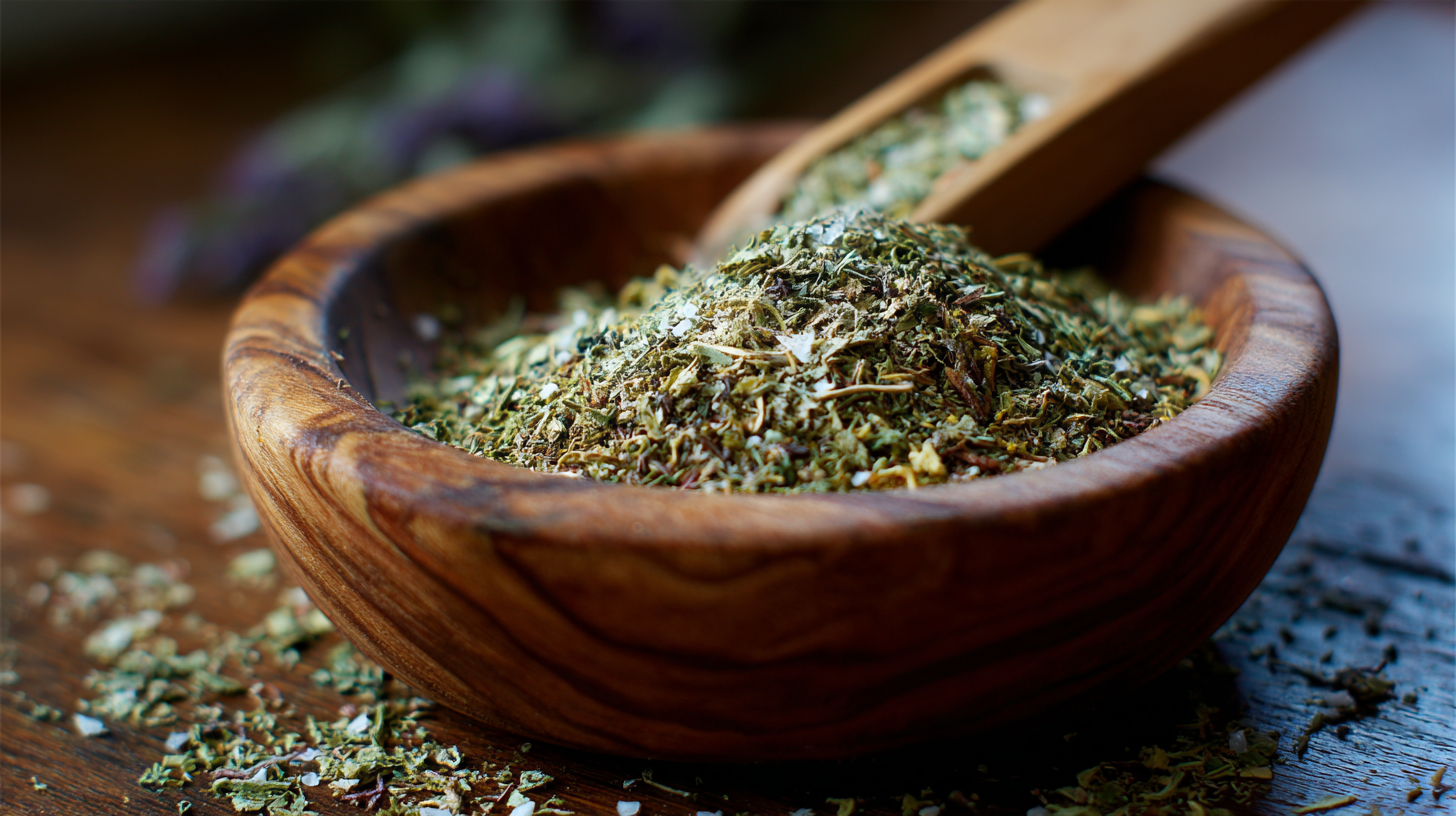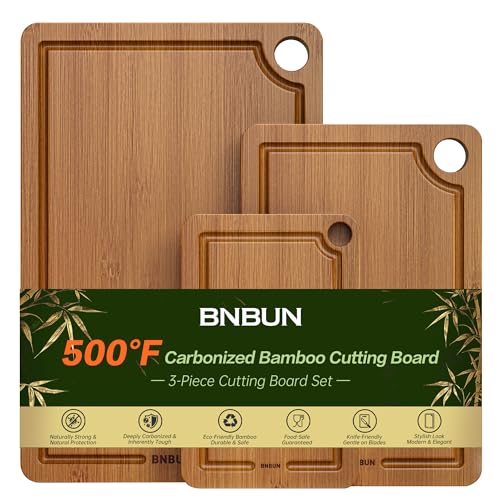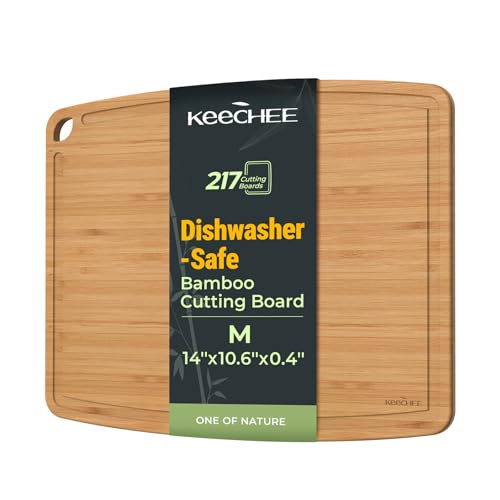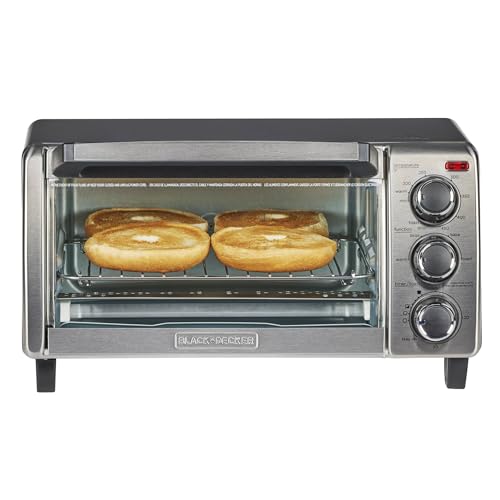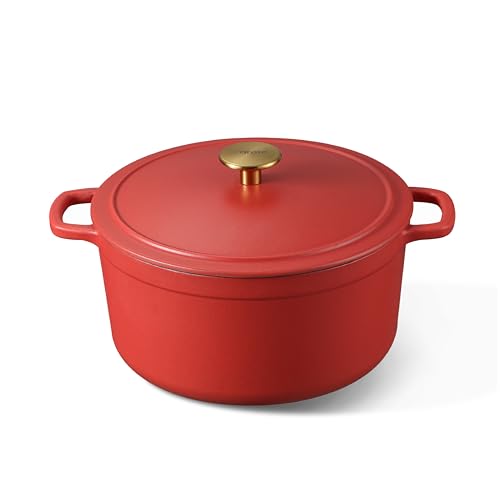Why Make Your Own Italian Seasoning
Creating your own Italian seasoning blend at home offers many advantages over grabbing a pre-made bottle from the grocery store shelf. Here’s why you should consider making this aromatic mixture yourself:
Cost Effectiveness
Store-bought Italian seasoning blends often come with a premium price tag for a relatively small amount. When you make your own blend, you can buy individual herbs in bulk and save important money in the long run. This approach becomes especially economical if you already keep these herbs in your pantry for other recipes.
Superior Freshness and Flavor
Commercial seasoning blends typically sit on shelves for months before reaching your kitchen. By creating your own mix, you control the freshness factor entirely. Fresher dried herbs contain more essential oils, resulting in more vibrant flavors that truly elevate your cooking.
Customizable to Your Taste
Perhaps the greatest benefit of homemade Italian seasoning is the ability to adjust it precisely to your preference. Love basil? Add a bit more. Find rosemary too strong? Scale it back. You can create a signature blend that perfectly complements your favorite dishes and matches your family’s taste preferences.
Avoids Additives and Fillers
Many commercial seasoning blends contain anti-caking agents, preservatives, or even hidden MSG. Your homemade version eliminates these unnecessary additives, giving you a pure herb blend with nothing artificial. This creates a cleaner flavor profile and removes potential allergens or sensitivities.
Sustainable Packaging
Making your own seasoning reduces packaging waste. You can store your blend in reusable glass jars rather than purchasing new plastic containers each time. This small change makes your cooking more environmentally friendly while keeping your herbs organized and accessible.
What Is Italian Seasoning?
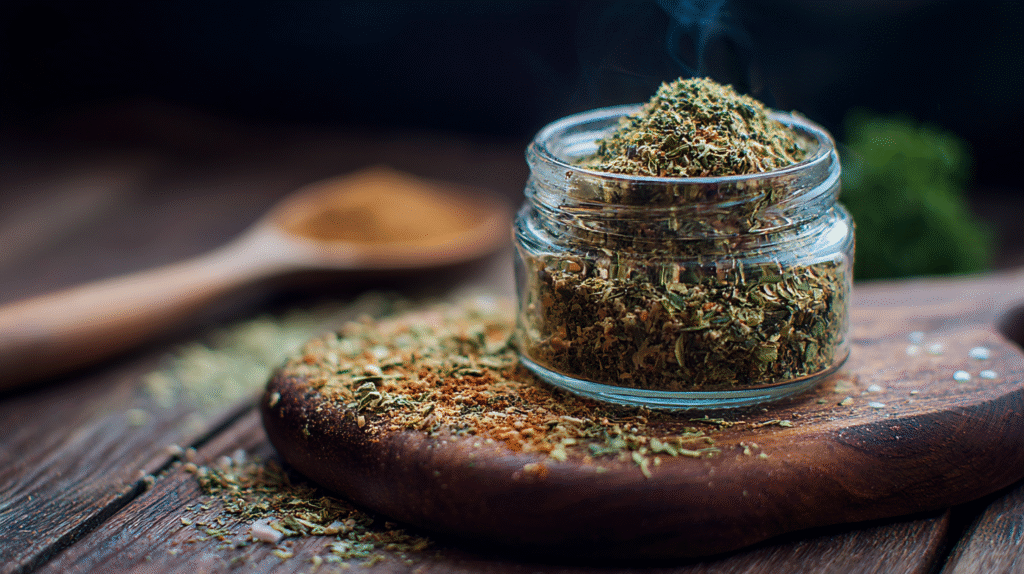
Italian seasoning is a versatile herb blend that captures the essence of Italian cuisine in a single mixture. This aromatic combination typically consists of dried Mediterranean herbs including basil oregano rosemary thyme and marjoram. These herbs collectively create the distinctive flavor profile that’s instantly recognizable in classic Italian dishes.
Unlike single herbs Italian seasoning provides a balanced flavor profile that adds depth and complexity to your cooking. The blend originated in the United States as a convenient way to approximate the herb combinations commonly used in traditional Italian cooking. Professional chefs and home cooks alike appreciate its ability to quickly infuse dishes with authentic Italian flavors without measuring multiple individual herbs.
The beauty of Italian seasoning lies in its remarkable versatility. You can sprinkle it on pizza drizzle it with olive oil for bread dipping or mix it into pasta sauces. Many cooks consider it an essential pantry staple because it simplifies meal preparation while maintaining authentic Mediterranean flavor notes.
Each herb in Italian seasoning contributes unique characteristics:
- Basil: Adds sweet aromatic notes with hints of pepper and mint
- Oregano: Provides earthy warmth with slight bitterness
- Rosemary: Contributes piney resinous undertones
- Thyme: Offers subtle minty earthiness
- Marjoram: Brings mild citrus and sweet pine flavors
Regional variations exist throughout Italy where herb combinations might differ slightly based on local cuisine traditions. Northern Italian blends often contain more marjoram and thyme while southern variations might emphasize oregano and basil. Commercial versions sometimes include additional ingredients like garlic powder red pepper flakes sage or savory to enhance the flavor profile.
Ingredients For Homemade Italian Seasoning
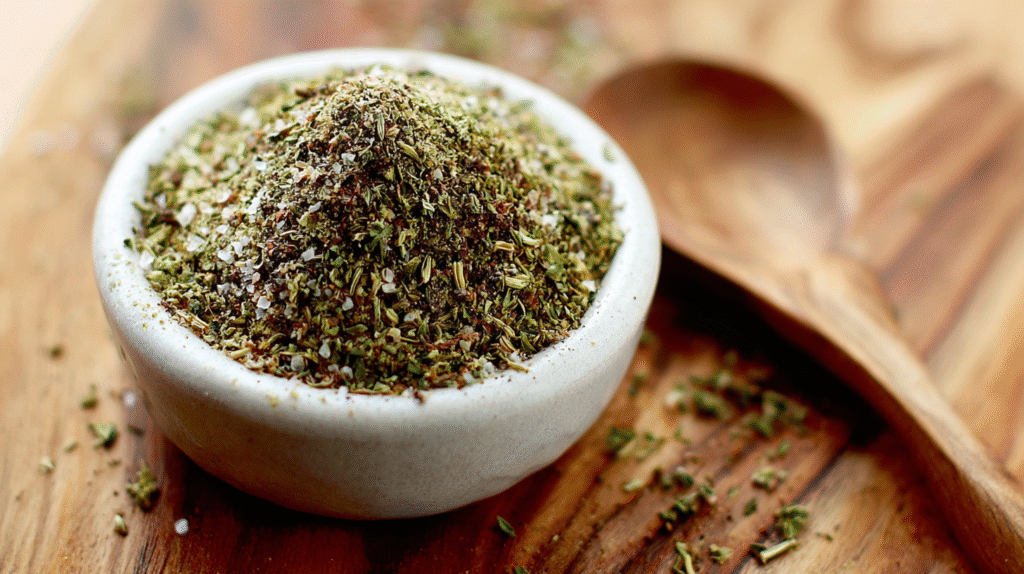
Creating authentic homemade Italian seasoning requires just a handful of dried herbs that you likely already have in your pantry. The beauty of making your own blend lies in the ability to adjust proportions based on your taste preferences.
Dried Herbs
- 2 tablespoons dried basil (provides sweet, peppery notes)
- 2 tablespoons dried oregano (adds earthy, slightly bitter flavor)
- 1 tablespoon dried rosemary (contributes pine-like aromatic qualities)
- 1 tablespoon dried thyme (offers subtle minty, earthy undertones)
- 1 tablespoon dried marjoram (brings mild, sweet oregano-like flavor)
- 1 teaspoon dried sage (imparts slightly peppery, musty notes)
- 1 teaspoon dried parsley (adds mild freshness and color)
Optional Add-Ins
- 1 teaspoon garlic powder (enhances savory depth)
- 1 teaspoon onion powder (provides subtle sweetness)
- ½ teaspoon red pepper flakes (adds heat for spicier versions)
- ½ teaspoon dried lemon zest (introduces bright citrus notes)
- ½ teaspoon fennel seeds (contributes anise-like flavor)
- ¼ teaspoon black pepper (delivers subtle warmth and complexity)
You can easily double or triple this recipe to make larger batches for storage. The dried ingredients maintain their potency for up to 6 months when stored in an airtight container away from heat and direct sunlight.
Equipment Needed
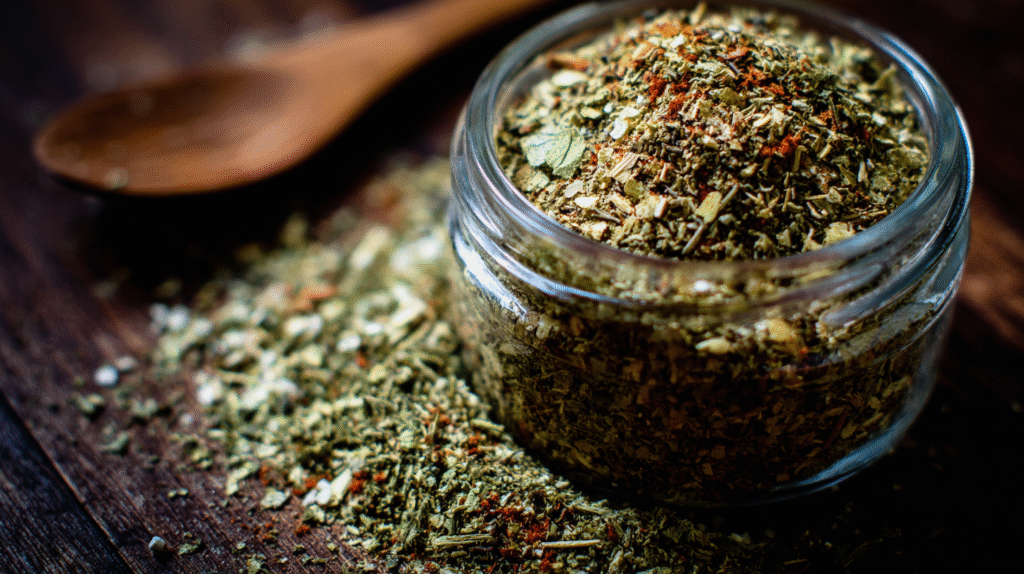
Creating your own Italian seasoning blend requires minimal equipment making it an accessible project for any home cook. You’ll need these basic kitchen tools to prepare fresh homemade Italian seasoning:
- Measuring spoons – For accurately portioning each herb in your blend
- Small mixing bowl – To combine all dried herbs together thoroughly
- Whisk or spoon – For evenly incorporating all ingredients without clumping
- Funnel (optional) – Helps transfer the mixture into storage containers without spills
- Airtight container – Essential for proper storage to maintain freshness and flavor
- Glass jar with lid – Ideal storage option that prevents moisture from affecting the herbs
- Label and marker – To mark the date of preparation and contents of your seasoning blend
Mason jars work exceptionally well for storing homemade seasoning blends because they seal tightly and protect against humidity. Storage containers should be completely dry before adding your herb mixture to prevent clumping. Your tools don’t need to be fancy or expensive—basic kitchen equipment you likely already own will suffice for creating perfect homemade Italian seasoning.
How To Make Italian Seasoning
Creating your own Italian seasoning blend is incredibly simple and takes just minutes. Follow these straightforward steps to prepare this versatile herb mixture that will elevate your cooking.
Mixing Method
Measure all your dried herbs into a small mixing bowl using precise measurements for consistent flavor. Add the dried basil, oregano, rosemary, thyme, marjoram, sage, and parsley to the bowl. Pour in any optional ingredients you’ve selected, such as garlic powder, onion powder, or red pepper flakes. Whisk the herbs together thoroughly to ensure even distribution throughout the mixture. Break up any clumps with your fingers or the back of a spoon to create a uniform texture. Test the aroma of your blend and adjust proportions if necessary based on your preference for certain herbs. Transfer your completed Italian seasoning to your storage container using a small funnel if available to prevent spillage.
Storage Tips
Store your homemade Italian seasoning in an airtight container to maintain maximum freshness and flavor potency. Keep the container in a cool, dark place like a pantry or cabinet away from direct sunlight which can degrade the herbs. Avoid storing near your stove or other heat sources that might compromise the essential oils in the herbs. Label your container with the date of preparation and ingredients list for easy reference. Use a glass container whenever possible as it won’t absorb flavors and provides better protection against moisture. Shake the container occasionally to prevent the heavier herbs from settling at the bottom. Your homemade Italian seasoning will maintain peak flavor for up to six months when stored properly. Check the blend periodically for freshness by rubbing a small amount between your fingers and smelling the released aroma.
Uses For Homemade Italian Seasoning
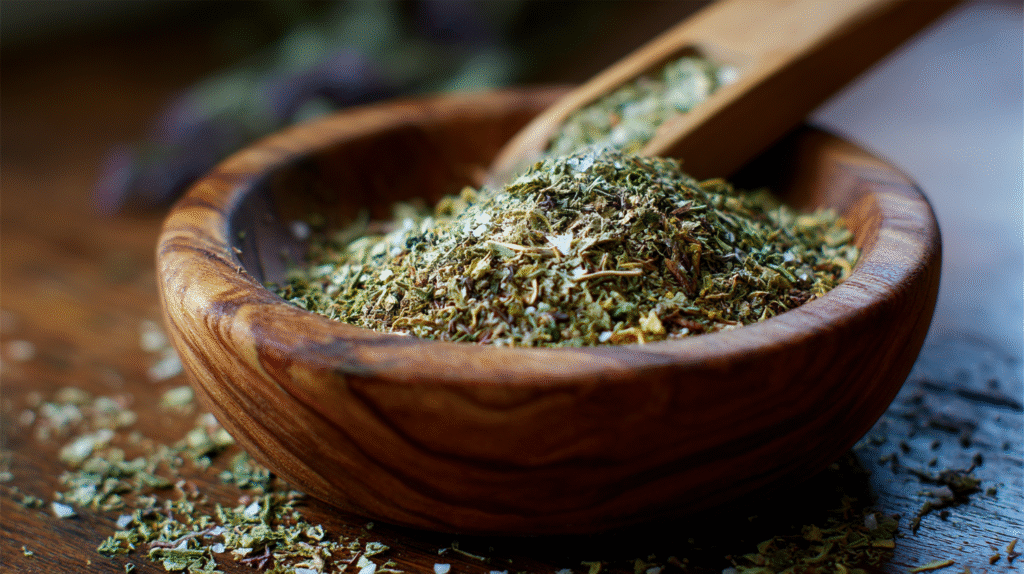
Your homemade Italian seasoning blend is incredibly versatile and can elevate countless dishes beyond basic Italian cuisine. This aromatic mix works wonders in everything from traditional pasta sauces to unexpected applications in everyday cooking.
Italian Dishes
Transform classic Italian recipes with a sprinkle of your homemade seasoning. Add 1-2 tablespoons to your pasta sauce for an authentic flavor that beats store-bought versions every time. Create restaurant-quality pizza by mixing the seasoning into your tomato base or sprinkling it directly over cheese before baking. Elevate your lasagna by incorporating the blend into both the meat sauce and ricotta layers. Make delicious Italian meatballs by adding 1 tablespoon per pound of ground meat along with breadcrumbs and eggs. Prepare a quick bruschetta by combining diced tomatoes with olive oil and your seasoning blend. Your homemade risotto will shine with a teaspoon stirred in during the final stages of cooking. Even simple dishes like Italian roasted vegetables benefit from tossing them with olive oil and a generous sprinkle of your custom blend before roasting.
Marinades And Dressings
Create flavorful marinades by combining your Italian seasoning with olive oil and vinegar or lemon juice. This mixture works wonderfully for chicken, pork, beef, or vegetables before grilling or roasting. Whip up an Italian vinaigrette by whisking together 1 tablespoon of your seasoning blend with ¼ cup olive oil, 2 tablespoons red wine vinegar, and a touch of honey. Transform plain yogurt into a tangy dip or sauce by stirring in your seasoning blend and letting the flavors meld for at least 30 minutes. Make a quick marinade for chicken by combining your blend with olive oil, garlic, and lemon juice, then allowing the meat to absorb these flavors for 2-4 hours before cooking. Your seasoning can also enhance store-bought dressings and marinades by adding a fresh, aromatic quality that commercial products often lack.
Other Creative Uses
Sprinkle your Italian seasoning blend on popcorn with a drizzle of olive oil for an elevated snack. Mix it into softened butter to create a compound butter perfect for garlic bread, corn on the cob, or finishing steaks. Add depth to scrambled eggs or omelets with a pinch of your blend. Season roasted nuts with olive oil and Italian seasoning for a savory snack option. Incorporate it into homemade bread dough or focaccia for built-in flavor. Use it to season homemade croutons by tossing bread cubes with olive oil and your blend before baking until crisp. Enhance soups of all varieties with a teaspoon added during cooking. Mix your blend with breadcrumbs for an ideal coating for chicken cutlets or fish fillets. Stir it into cream cheese for a quick and flavorful spread perfect for bagels or crackers. You can even use it to rim glasses for a savory Bloody Mary cocktail variation.
Customization Options
Your homemade Italian seasoning can be adapted to suit different flavor preferences and culinary applications. These variations allow you to create personalized blends that match exact regional cuisines or add exciting new dimensions to your cooking.
Mediterranean Variation
Transform your basic Italian seasoning into a broader Mediterranean blend by incorporating additional herbs and spices from the region. Add 1 tablespoon of dried mint for a refreshing note that pairs beautifully with lamb and vegetable dishes. Include 1 teaspoon of sumac for a tangy, lemony flavor that brightens the entire mixture. For more depth, mix in 1 teaspoon of ground coriander seeds which brings citrusy undertones. A pinch of dried orange zest can introduce a subtle sweetness that complements the savory herbs. This Mediterranean variation works exceptionally well in Greek-inspired dishes, couscous, and grilled seafood. You might also consider adding 1/2 teaspoon of dried lavender for an authentic Provençal touch that evokes the flavors of southern France.
Spicy Italian Blend
Kick up the heat in your Italian seasoning by creating a spicier version that adds excitement to any dish. Start with your base Italian seasoning recipe and incorporate 1 tablespoon of crushed red pepper flakes for noticeable heat. Add 1 teaspoon of ground black pepper to enhance the overall spiciness with a different kind of warmth. For complexity, mix in 1/2 teaspoon of ground cayenne pepper which provides intense heat without overwhelming the herbal notes. The addition of 1 teaspoon of smoked paprika introduces a subtle smokiness that complements the spicy elements. This fiery blend elevates dishes like arrabbiata sauce, spicy Italian sausage, and zesty marinades for grilled meats. Calabrian-style cooking particularly benefits from this spicier adaptation, reflecting the heat-forward culinary traditions of southern Italy. Remember to store this spicy blend separately and label it clearly to avoid surprising unsuspecting diners with unexpected heat.
How Long Does Homemade Italian Seasoning Last?
Properly stored homemade Italian seasoning maintains its peak flavor for 6 to 12 months. The shelf life depends largely on the freshness of your original dried herbs and your storage conditions. Dried herbs don’t technically spoil but gradually lose their potency and aromatic qualities over time.
Your homemade blend stays fresher longer when stored in airtight glass containers away from heat sources light and moisture. Mason jars spice tins or repurposed glass bottles with tight-fitting lids work exceptionally well for preserving the volatile oils that give your herbs their distinctive flavors.
Storage location significantly impacts longevity. Keep your Italian seasoning in a cool dark cupboard away from your stove oven or dishwasher. The pantry or a dedicated spice drawer provides ideal conditions that prevent premature degradation of the herbs’ essential oils.
You’ll know your seasoning blend is past its prime when the aroma becomes noticeably faint. Fresh Italian seasoning should release a robust fragrant scent when you open the container or rub a pinch between your fingers. Faded color often accompanies diminished aroma indicating the herbs have lost much of their flavor-giving compounds.
Extending your blend’s shelf life requires minimizing air exposure. Always use dry measuring spoons when scooping from the container to prevent introducing moisture. This simple habit prevents potential mold growth and preserves flavor integrity throughout the storage period.
Seasonal batch-making offers the best flavor experience. Creating smaller quantities every 4-6 months ensures you always have vibrant fresh-tasting Italian seasoning ready for your culinary creations. This practice maximizes the aromatic impact of your homemade blend in every dish.
Gift-Giving Ideas
Transform your homemade Italian seasoning into thoughtful presents that will delight food enthusiasts in your life. Mason jars filled with your aromatic herb blend make perfect gifts for holidays birthdays or housewarming parties. Purchase decorative glass containers with airtight seals to preserve freshness while adding visual appeal to your gift.
Create custom labels that include the ingredients list preparation date and suggested uses to help recipients make the most of your culinary creation. Pair your seasoning blend with complementary items like premium olive oil imported pasta or a beautiful wooden spoon to create a complete Italian cooking gift basket.
For an extra special touch write out a few of your favorite recipes that feature the Italian seasoning on decorative recipe cards. Holiday gift-giving becomes effortless when you prepare several jars at once combining efficiency with personalization.
Consider creating seasonal gift sets by pairing different variations of your seasoning blend—perhaps including your Mediterranean version alongside the traditional and spicy options. Attach small sampling bottles of each variety to introduce recipients to the range of flavors.
Professional presentation elevates your homemade gift significantly. Wrap jars with twine or raffia tie on a sprig of fresh rosemary or bay leaf and add a personalized tag for a rustic Italian-inspired aesthetic. Teachers coworkers neighbors and family members will appreciate this practical handcrafted gift that keeps giving throughout the year whenever they cook.
For wedding or shower gifts assemble a “pasta night” package containing your seasoning blend alongside quality pasta artisanal tomato sauce and perhaps a bottle of Italian wine. Busy parents especially appreciate these thoughtful meal-starter kits that simplify weeknight cooking while delivering exceptional flavor.
The Perfect Homemade Italian Seasoning Recipe
Creating your own Italian seasoning blend puts you in control of your culinary experience. With just a few dried herbs and minutes of your time you’ll have a versatile mix that elevates everything from pasta sauces to roasted vegetables.
Your homemade blend isn’t just fresher and more flavorful than store-bought options – it’s also free from additives and fillers that can dull the authentic Italian taste. Plus you’ll save money while reducing packaging waste.
Whether you stick with the classic recipe or customize it with add-ins like red pepper flakes or lemon zest the possibilities are endless. Store your creation properly and you’ll enjoy its vibrant flavors for months to come.
Ready to transform your cooking? This simple homemade Italian seasoning is the perfect place to start.

